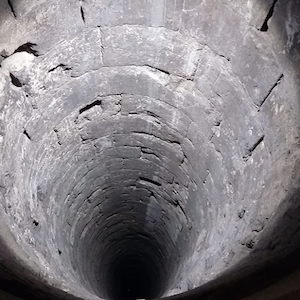Different groundwater behaviour in deep karst boreholes: the case of Jadro spring basin (Dinaric karst, Croatia)

All claims expressed in this article are solely those of the authors and do not necessarily represent those of their affiliated organizations, or those of the publisher, the editors and the reviewers. Any product that may be evaluated in this article or claim that may be made by its manufacturer is not guaranteed or endorsed by the publisher.
Authors
The paper analyzes the data of groundwater level (GWL), groundwater temperature (TW), and electrical conductivity (EC) measurements in three deep piezometers (B1, B2, B3) in the Jadro spring basin, taken from October 2010 to December 2021. The variation of these parameters is analyzed at different time scales: annually, monthly, daily (24 hours), and hourly. They are compared with the data of the same parameters measured at the Jadro Spring. The analysis of the maximum observed rise and fall rates of the GWL showed that the piezometers were drilled in very different karst environments. Piezometer B1 is located in a karst matrix where the water flows predominantly in a diffuse laminar (slow-flow) regime. Piezometers B2 and B3 are located in a fault line where numerous large karst underground formations occur and rapid turbulent water flow takes place. The mean annual flows of the Jadro Spring strongly depend on the mean annual GWL-s in each of the piezometers. For much of the year (about 99%), the GWL in all three piezometers is more than 210 m below the ground surface. As the measuring sensors are located near the bottom of the piezometers, the groundwater temperature is almost stagnant. It is always at 12.5 ºC in piezometer B1 and behaves almost identically in piezometer B3. Water temperature is the highest in piezometer B2 and hovers around the average value of 13.5 ºC. At the Jadro Spring, the average water temperature is 12.95 ºC. The electrical conductivity values are the highest in piezometers B2 and B3, with an average of around 0.5 mS/cm. They are lower in piezometer B1, where they range around an average value of 0.465 mS/cm, while at the Jadro Spring, they vary from 0.40 mS/cm to 0.48 mS/cm, with an average value of 0.44 mS/cm. A distinct seasonal pattern in groundwater level behavior is evident across all piezometers. However, no discernible upward or downward trend is observed.
How to Cite

This work is licensed under a Creative Commons Attribution-NonCommercial 4.0 International License.
PAGEPress has chosen to apply the Creative Commons Attribution NonCommercial 4.0 International License (CC BY-NC 4.0) to all manuscripts to be published.














